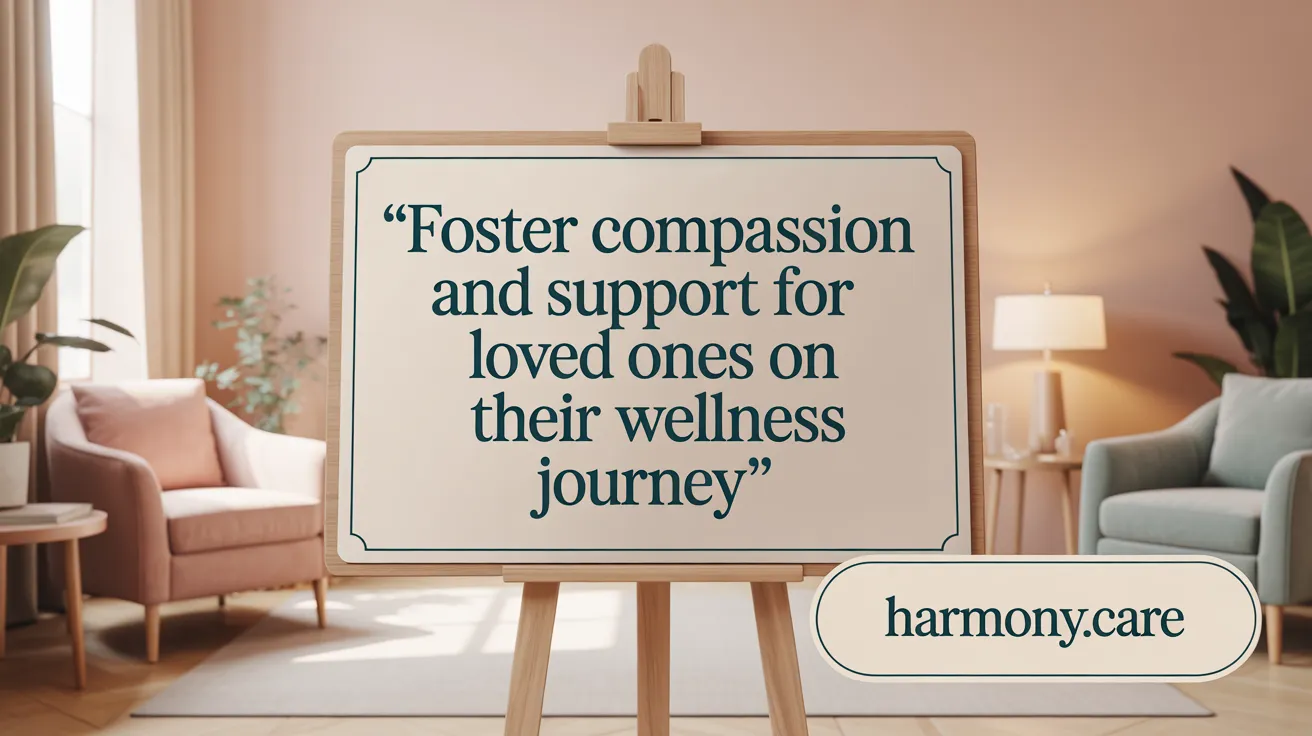Why a Safe Home Matters for Recovery
Recovery from substance use, mental health challenges, or medical conditions such as stroke often begins and continues within the home environment. Creating a safe, supportive, and nurturing space is essential to fostering healing, preventing relapse, and promoting emotional well-being. This article explores comprehensive best practices, environmental modifications, and strategies informed by research to help individuals and families transform their homes into recovery-friendly havens.
Best Practices for Creating a Safe and Supportive Recovery Home
 Creating a home environment conducive to recovery from substance use or mental health issues involves several practical and compassionate measures.
Creating a home environment conducive to recovery from substance use or mental health issues involves several practical and compassionate measures.
One of the most important steps is removing substances and paraphernalia tied to past substance misuse. Clearing the home of alcohol, drugs, and related items reduces triggers and creates a clean slate for healing. Securing or disposing of hazardous household chemicals, toxins, and items that could potentially cause harm is also essential.
Establishing clear household boundaries supports a substance-free environment. This can include protocols such as refraining from alcohol or drug use in the home, and setting rules for guests. Open and honest communication with household members promotes trust, while non-judgmental listening helps foster emotional stability.
A well-designed space enhances mental well-being. Incorporating natural light by allowing sunlight and arranging furniture to optimize sunlight exposure boosts mood. Use warm lighting at night to promote relaxation. Adding calming elements such as soft fabrics, plants, and soothing colors creates a serene atmosphere.
Designating specific areas for recovery activities and self-care further supports recovery efforts. Spaces for meditation, journaling, or physical activity can enhance focus and motivation. Personal comforts, decor, and aromatherapy can make these zones inviting.
Supporting healthy routines in nutrition, sleep, and exercise is vital. Stocking nutritious foods and establishing regular meal times aid in physical and mental recovery. Creating consistent sleep schedules and encouraging physical activity help build resilience against relapse.
Building a supportive home also involves setting boundaries within the family. Encouraging open communication about needs and limits fosters understanding. Inviting supportive individuals—such as friends, sponsors, or recovery peers—into the home reinforces sobriety.
Additional strategies include managing indoor environments for safety. Ensuring clear pathways, installing safety devices like grab bars, and removing hazards like sharp furniture or clutter decrease risk and promote independence.
Including outdoor or nature-related activities—gardening, outdoor time—can reduce stress and improve emotional health. Incorporating natural elements like indoor plants also contributes to a calming atmosphere.
Implementing these practices, along with ongoing assessment and flexibility, creates a foundation for sustained recovery. A home that is organized, safe, and nurturing plays a critical role in supporting long-term sobriety and emotional well-being.
| Aspect | Practice | Additional Details |
|---|---|---|
| Substance Removal | Clear of drugs, alcohol, paraphernalia | Ensures triggers are minimized |
| Space Design | Maximize natural light, calming decor | Enhances mood and relaxation |
| Activity Zones | Meditation, journaling, exercise areas | Promotes self-care and focus |
| Nutrition | Stock nutritious foods, plan meals | Supports physical health |
| Safety Measures | Non-slip mats, grab bars, clear pathways | Prevents accidents |
| Emotional Support | Open communication, supportive visitors | Builds trust and stability |
| Nature Connection | Indoor plants, outdoor activities | Promotes calming and stress reduction |
| Routine Building | Consistent sleep, diet, exercise | Strengthens resilience |
Creating a safe, organized, and empathetic home environment is essential for long-term success in recovery. Tailoring these practices to individual needs and maintaining flexibility helps ensure continued progress.
Essential Modifications to Enhance Safety During Recovery

How can a home be modified to ensure safety during recovery?
Ensuring safety at home during recovery involves making specific modifications tailored to the individual's needs. Start with a thorough home safety assessment to identify hazards that could cause falls or injuries.
Key improvements include installing grab bars and handrails, especially in bathrooms and stairways, to support mobility and stability. Adding non-slip mats and fixtures helps prevent slipping accidents.
Lighting plays a crucial role—install nightlights, motion sensors, and ensure good illumination throughout the house, particularly in hallways and bathrooms.
Removing tripping hazards is vital; this includes eliminating loose rugs, clutter, and cords that obstruct pathways.
Rearranging furniture to create clear, obstacle-free pathways ensures easy movement and reduces fall risks. Look for wider doorways and thresholds that can be lowered or replaced with ramps to improve accessibility.
Assistive devices like raised toilet seats, shower chairs, and bedrails provide additional support. For mobility, consider widening doorframes or adding ramps, especially during recovery phases such as post-stroke.
Consulting with healthcare professionals or occupational therapists can ensure modifications meet personal safety needs and adapt to changing abilities.
How can home environments be adapted to support health and safety during recovery from medical conditions such as stroke?
Homes can be tailored for stroke recovery by focusing on mobility, ease of movement, and fall prevention. Installing grab bars in bathrooms and near beds offers stability during transfers.
Non-slip flooring is essential to prevent falls. Widening doorways and improving accessibility with ramps can accommodate wheelchairs or walkers.
Good lighting throughout the house, including nightlights, helps avoid accidents during nighttime movements.
Rearranged furniture should allow for straightforward navigation, and clutter must be minimized.
Low-cost modifications like bedside rails or raised seats can dramatically improve safety and comfort.
An occupational therapist can analyze home layouts and recommend personalized adjustments to enhance safety and foster independence.
These adaptations are crucial not only for safety but also to promote a sense of confidence and autonomy during the recovery process.
Strategies for Fostering a Supportive and Sober Living Environment

What strategies can foster a supportive and sober living space?
Creating a safe and nurturing environment is vital for individuals in recovery. The foundation begins with establishing drug- and alcohol-free spaces by removing all substances, paraphernalia, and triggers that could prompt cravings.
Implementing structured routines provides stability. Regular meal times, medication schedules, and designated times for activities foster consistency and a sense of normalcy. Clear household boundaries—such as no alcohol in the home and respectful communication—help maintain respect and accountability.
Family and friends play a crucial role. Building a strong support network involving loved ones and recovery professionals offers emotional backing and encouragement. Family therapy sessions can improve communication and resolve conflicts, promoting a healthier living environment.
Designing the physical space with comfort and calmness enhances mental well-being. Good lighting, comfortable furniture, and calming colors create a positive atmosphere. Incorporating healthy habits like regular exercise, nutritious eating, and stress management techniques such as mindfulness or yoga reduces stress and supports emotional health.
Engaging in recovery-focused activities, including gardening, art, or volunteering, promotes purpose and soothing routines. Participation in sober living communities or support groups extends peer support and accountability.
By combining these strategies—removing triggers, establishing routines, fostering open communication, and engaging in healthy activities—a supportive environment significantly increases the chances of sustained recovery and emotional stability.
Environmental Safety and Emergency Preparedness in Recovery Settings

What environmental safety measures and emergency preparedness steps are important for recovery settings?
Creating a safe environment is crucial for individuals recovering from substance use disorder. Essential safety measures include ensuring all exits and pathways are accessible and free of obstacles. This prevents falls and allows quick evacuation if necessary.
Installing smoke detectors, carbon monoxide alarms, and other fire safety equipment is vital. These devices help detect hazards early and protect occupants from potential dangers. Regularly testing and maintaining these detectors ensures they are operational.
Stocking well-equipped first aid kits and having emergency communication devices, such as phones or wearable alert systems, are essential. These tools enable quick response in case of accidents or medical emergencies.
Planning for natural disasters and environmental hazards involves knowing evacuation routes and having designated safe zones. Preparing an emergency plan tailored to local threats like floods, wildfires, or storms can save lives.
Managing indoor air and water quality also plays a role in safety. Proper ventilation, use of air purifiers, and regular testing of water supplies help reduce exposure to harmful toxins like mold, radon, or lead.
Implementing safety policies, such as strict outdoor smoking rules, minimizes fire risks and secondhand smoke exposure. Proper storage of medications, household toxins, and firearms is equally important; these items should be kept out of reach, locked, or unloaded, especially in homes with vulnerable residents.
By combining these environmental safety strategies with thorough emergency preparedness plans, recovery homes and spaces become resilient, health-promoting environments supporting long-term sobriety and well-being.
Supporting Loved Ones Through a Compassionate and Safe Home Environment
 Creating a home environment that fosters recovery for someone overcoming substance use disorder is vital. This begins with establishing clear boundaries—such as prohibiting alcohol and drugs within the household—to minimize triggers and promote safety. Decluttering the space and removing reminders of past substance misuse can help start fresh and reduce stress.
Creating a home environment that fosters recovery for someone overcoming substance use disorder is vital. This begins with establishing clear boundaries—such as prohibiting alcohol and drugs within the household—to minimize triggers and promote safety. Decluttering the space and removing reminders of past substance misuse can help start fresh and reduce stress.
Open and honest communication plays a crucial role. Approaching conversations with empathy, without judgment, encourages trust and allows the recovering individual to express their feelings and progress freely. Educating oneself about addiction, its triggers, and mental health challenges enhances understanding, enabling more effective support.
Supporting routines and self-care activities further reinforce stability. Encouraging regular exercise, balanced nutrition, and engaging in relaxing hobbies can bolster emotional resilience. Involving the person in family therapy sessions can help repair damaged relationships, foster understanding, and create a supportive dynamic.
Seeking additional resources such as community programs, support groups for families, and professional counseling can provide essential assistance and reduce caregiver stress. Balancing this support with personal self-care ensures caregivers maintain their wellbeing while providing ongoing compassion.
Creating a nurturing environment involves more than physical safety—it requires emotional support, education, and active involvement. A supportive, substance-free home fosters recovery, improves mental health, and lays the groundwork for long-term sobriety.
Creating a Recovery-Friendly Home: The Path Forward
A safe and supportive home environment is a cornerstone of successful recovery from substance use, mental health challenges, and medical conditions like stroke. By integrating best practices in environmental safety, fostering sober and emotionally supportive living spaces, and preparing for emergencies, families and individuals can significantly enhance well-being and reduce relapse risks. Compassionate communication, education, and ongoing adaptations ensure that the home remains a place of healing and stability. Embracing these principles not only supports recovery journeys but also strengthens relationships and fosters resilience for a healthier, hopeful future.
References
- Creating a Supportive Home Environment for Recovery
- How to Make Your Home and Surroundings Conducive ...
- Recovery Home Environment Characteristics Associated ...
- Creating a Safe Home Environment for Stroke Patients
- Create a Safe Home | Taking Charge of Your Wellbeing
- Creating a Sober-Friendly Environment at Home
- Creating a Supportive Home Environment for Alcohol ...
- Creating Safe Spaces For Loved Ones | The Phoenix
- Creating a Supportive Home Environment for Recovery
